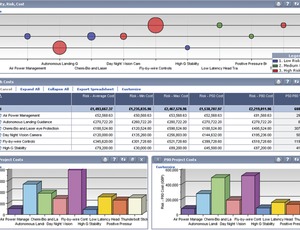
Critical-path method, or CPM, scheduling tools are doing so much more than managing schedules in construction these days. The project- management software platforms are gaining in sophistication and complexity—with better support for 4D building information modeling that gives project teams a more realistic view of the project. Milestones, risk analysis, business intelligence—it's all baked into CPM tools that are lightweight, web-based and easier to use on mobile devices.
"That's where all software development is going," said Dick Faris, SVP of customers for Oracle Primavera P6, the dominant project scheduling and project management platform in use by many larger construction firms.
"That's where the energy is, that's the destination [of many project-management tools], and that's where much of our effort is," he said during a keynote address at the CPM Conference in New Orleans. "I don't expect the majority of our customers to switch from client-server [networking architecture], but a number have and a number will continue to do that over time," said Faris, who co-founded Primavera with Joel Koppelman in 1983. Oracle bought the company in 2009.
"How do you come up with a schedule that's more truthful?" asked one audience member during a Q&A session. Unrealistic and politically driven end dates remain a common issue with schedulers, no matter how powerful their tools, he agreed, saying, "You get dates imposed on you that everyone knows can't be met."
Better Views to the Truth
Unrealistic dates are one among many reasons that web-based, distributed CPM software is gaining in use. It's easier to build in schedule analytics or plug in risk evaluators, such as Acumen Fuse, to help project teams spot schedule problems much sooner.
For example, Thomas Dengenis, CEO of Synchro, which makes 4D scheduling visualization software, says the firm partners with Primavera so customers can refine "what if" scenarios that have become a key step in critical-path scheduling. "You don't want to be discovering issues with only a two-, three- or four-week look-ahead," he said. "Why? Because that's not a planning time frame—that's a reacting time frame."
That's also why 4D BIM is gaining in use for the true view it can provide once the BIM model is integrated with scheduling data.
But as 4D gains in use, more schedulers need to think of simplicity before using these powerful tools. This was a major theme at the conference, which is organized by engineering professor, scheduling expert and author Fred Plotnick.
Keep scheduling terms simple and "approve the work breakdown structure" (WBS) with executives or owners "before you create schedules," urged Jonathan Japka, a New Jersey-based consultant with expertise in Primavera P6. "If you can't figure out what it is, it's a bad WBS," he said during a panel on making schedules more human-friendly.

Post a comment to this article
Report Abusive Comment